- Courses
- GS Full Course 1 Year
- GS Full Course 2 Year
- GS Full Course 3 Year
- GS Full Course Till Selection
- Online Program
- GS Recorded Course
- NCERT (Recorded 500+ Hours)
- Polity Recorded Course
- Geography Recorded Course
- Economy Recorded Course
- AMAC Recorded Course
- Modern India, Post Independence & World History
- Environment Recoded Course
- Governance Recoded Course
- Science & Tech. Recoded Course
- International Relations and Internal Security Recorded Course
- Disaster Management Module Course
- Ethics Recoded Course
- Essay Recoded Course
- Current Affairs Recoded Course
- CSAT
- 5 LAYERED ARJUNA Mentorship
- Public Administration Optional
- ABOUT US
- OUR TOPPERS
- TEST SERIES
- FREE STUDY MATERIAL
- VIDEOS
- CONTACT US
PLACES IN NEWS 26th FEBRUARY 2025
PLACES IN NEWS 26th FEBRUARY 2025

Bhitarkanika National Park
Why in news?
- Bhitarkanika National Park, a key winter habitat for migratory birds, is experiencing an early departure of these seasonal visitors, which usually arrive in large numbers during the colder months.
About Bhitarkanika National Park:
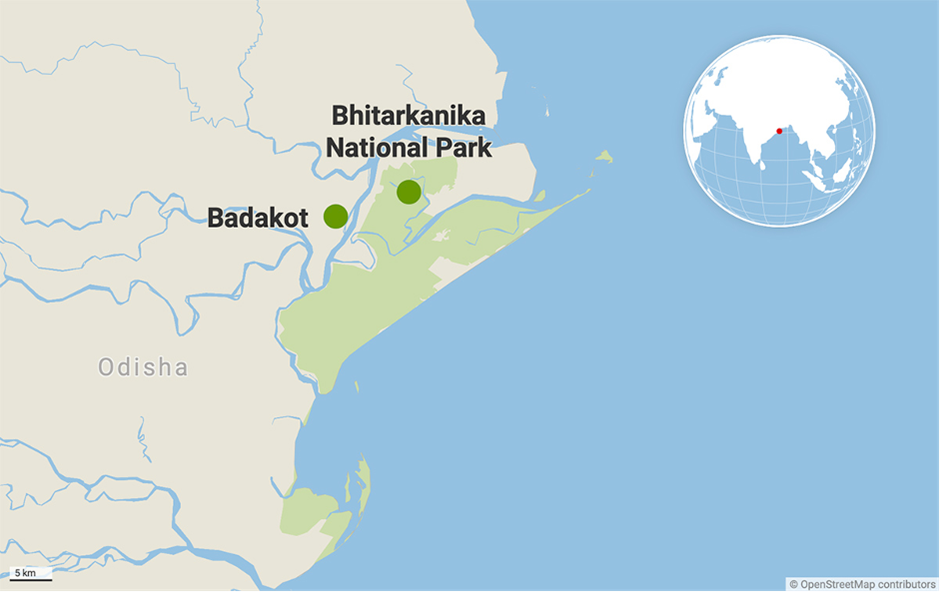
- Location:
- Bhitarkanika National Park is located in the Kendrapara district of Odisha, India, and lies in the estuarial region formed by the Brahmani, Baitarani, Dhamra, and Pathsala rivers.
- These rivers and their tributaries create a dynamic and biodiverse ecosystem. The park covers an area of 145 square kilometres and forms the core of the Bhitarkanika Wildlife Sanctuary.
- Flora and Fauna:
- The park's floral diversity is dominated by lush mangrove forests, comprising 62 species of mangroves, including Sundari, Bani, and Kandelia.
- These mangroves provide vital ecological services, including stabilizing coastlines, mitigating erosion, and serving as a natural barrier against cyclones. The intertidal zones and mudflats further enhance the ecological richness of the park.
- Bhitarkanika is renowned for its thriving faunal diversity, particularly its population of saltwater crocodiles (Crocodylus porosus), which are the largest reptiles in the world.
- It is home to 1,826 saltwater crocodiles, as recorded in the 2025 census, including 18 rare albino crocodiles.
- Additionally, it houses mugger crocodiles (Crocodylus palustris) and the critically endangered gharial (Gavialis gangeticus), highlighting its role as a critical habitat for these species.
- The estuarine ecosystem also supports a wide variety of aquatic species, including fish, crabs, and prawns.
- The park serves as a haven for migratory birds, with species like Asian open-bill storks, black ibis, and egrets flocking to its wetlands.
- It is also home to spotted deer, fishing cats, otters, and various snakes, including the king cobra and Indian python. The endangered olive ridley turtles nest along its coastal areas, adding to its ecological importance.
- Ecological significance:
- Bhitarkanika plays a crucial role in preserving the fragile coastal ecosystem of eastern India. Its mangroves act as carbon sinks, reducing greenhouse gas concentrations, while its rich biodiversity sustains livelihoods for local communities through fishing and ecotourism.
- The park’s conservation efforts have successfully protected endangered species, making it a cornerstone of India’s wildlife heritage.
- Bhitarkanika’s unique blend of rivers, mangroves, and diverse fauna underscores its significance as a biodiversity hotspot and a critical area for ecological balance.
- Reason Behind Early Departure of Migratory Birds:
- Bhitarkanika is witnessing an early departure of migratory birds, which usually stay through the winter months.
- This phenomenon may be attributed to climate change, rising temperatures, and alterations in local weather patterns, affecting their natural migratory behaviour.
- Reduced availability of food resources, possibly due to changes in wetland ecology, may also be influencing their early return.
- Anthropogenic disturbances such as increased human activity, habitat degradation, and pollution could be contributing factors.
- These trends highlight the urgent need for conservation measures to protect Bhitarkanika’s delicate ecological balance and ensure the continued arrival of migratory birds in the future.
Kalakkad-Mundanthurai Tiger Reserve
Why in news?
- The post-monsoon wildlife survey has begun in the Kalakkad Division of the Kalakkad-Mundanthurai Tiger Reserve (KMTR)
About Kalakkad-Mundanthurai Tiger Reserve:
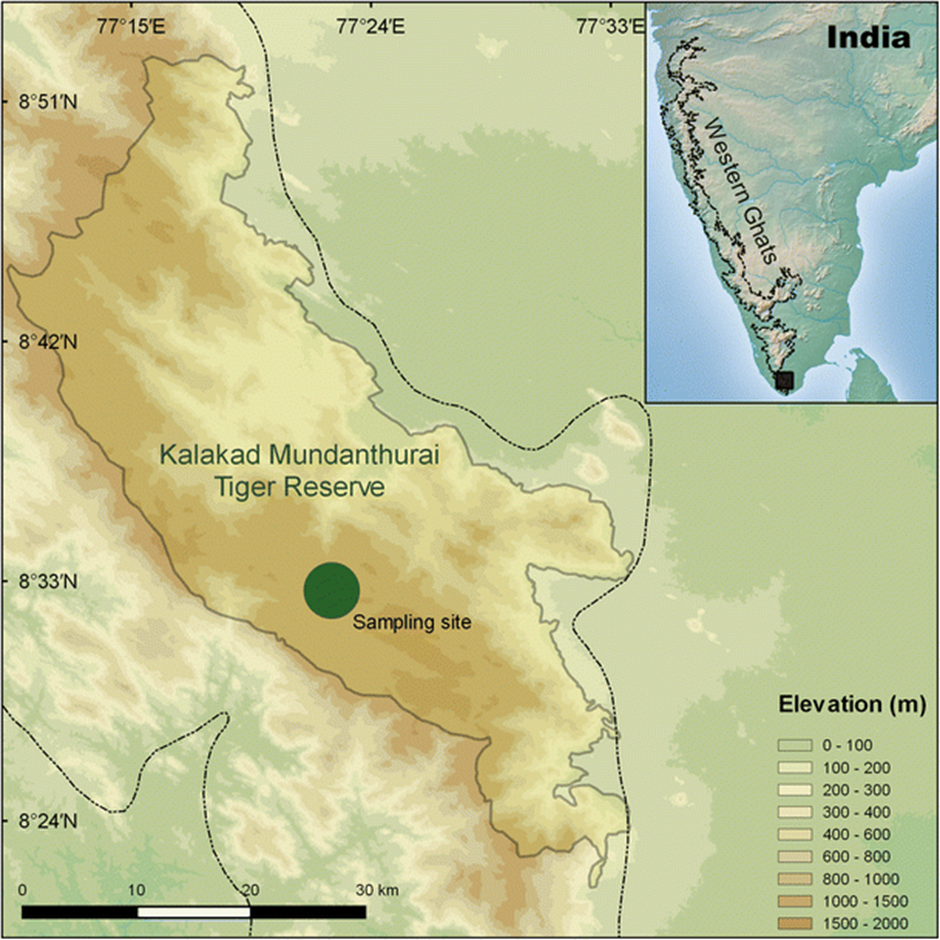
- Location:
- Kalakkad-Mundanthurai Tiger Reserve (KMTR) is situated in the Southern Western Ghats of Tamil Nadu and spans across the Tirunelveli district.
- It comprises three major sanctuaries: Kalakad Sanctuary, Mundanthurai Sanctuary, and part of Kanyakumari Sanctuary.
- Nestled between Kerala and Tamil Nadu, the Agastya Malai Hill Range forms its core and is recognised as one of the world’s 18 biodiversity hotspots.
- Known as the “River Sanctuary,” the reserve is the origin of 14 rivers, including the Servalar River, a tributary of the Thamirabarani River.
- Terrain and Vegetation:
- The landscape consists of undulating terrains with valleys and porous rocks, supporting diverse ecosystems.
- Vegetation ranges from thorny shrub jungles to dense evergreen forests, interspersed with savannah woodlands, grasslands, and plantations of tea and coffee.
- Flora and Fauna:
- The reserve hosts rich floral diversity, including species like fragrant flowers, wild orchids, ironwood trees, wild nutmeg, ebony trees, and durian trees.
- It is home to a wide array of wildlife, including tigers, leopards, rusty-spotted cats, sloth bears, elephants, gaurs, sambars, spotted deer, mouse deer, Nilgiri langurs, slender lorises, bonnet macaques, and the endangered lion-tailed macaques.
Pallikaranai marshland
Why in news?
- The Pallikaranai marshland in Chennai recently became a birdwatching hotspot as birders recorded the rare slender-billed gull, highlighting the wetland’s ecological significance and rich avian biodiversity.
About Pallikaranai marshland:
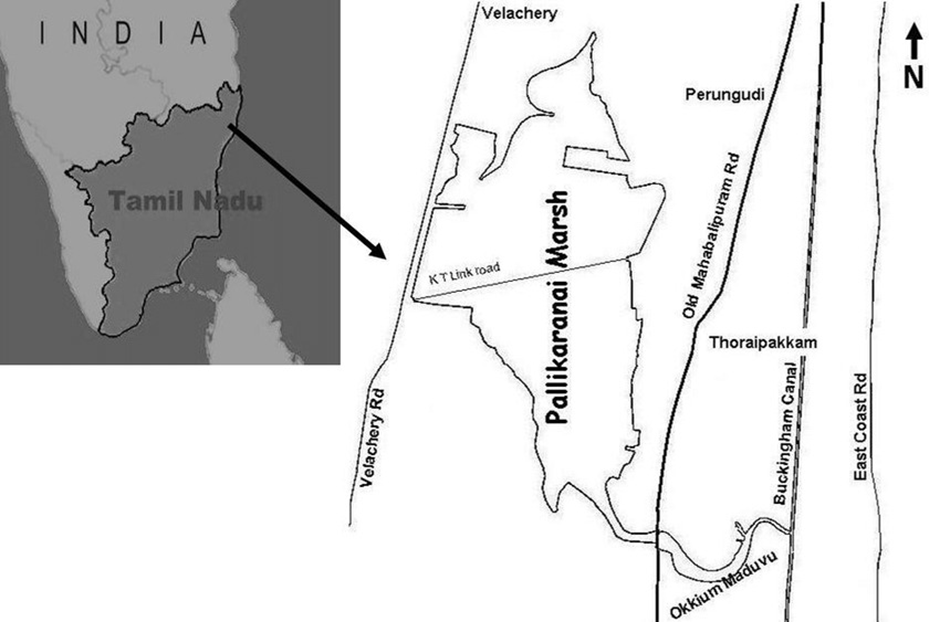
-
- Location:
- Location:
- Pallikaranai Marshland is a freshwater wetland in Chennai, Tamil Nadu, located 20 km south of the city centre and adjacent to the Bay of Bengal.
- Spanning 80 square kilometres, it is one of the last surviving wetlands in South India and the only one in Chennai.
- It is listed under the National Wetland Conservation and Management Programme (NWCMP) and is among Tamil Nadu’s three prioritised wetlands alongside Point Calimere and Kazhuveli.
- Economic & Environmental Features:
- Economic & Environmental Features:
- The marsh controls floods, reducing urban flooding risks in Chennai. It supports fishing and agriculture, helps maintain groundwater levels, and contributes to carbon sequestration.
- It holds a rich aquatic ecosystem that supports diverse flora and fauna. It also serves as a breeding and foraging ground for migratory birds.
- However, urbanisation, pollution, and waste dumping have severely shrunk the wetland.
- In 2007, undeveloped areas were notified as reserve forest to prevent further degradation.
About Slender-Billed Gull:
- The Slender-Billed Gull (Chroicocephalus genei) is a medium-sized seabird found in coastal regions and wetlands.
- It breeds around the Mediterranean and western Indian Ocean, with migratory populations wintering in North Africa and India. In India, it is commonly recorded along the western coast and northern wetlands.
- The bird is 37-40 cm long with a 90-102 cm wingspan, featuring a pale grey body, white head, and dark red bill and legs.
- It primarily feeds on fish, diving from a few metres above water.
- The IUCN Red List classifies it as ‘Least Concern’, indicating no immediate threat to its population.
Thames River
Why in news?
- Rising temperatures and nutrient pollution from agriculture and wastewater are driving increased algal blooms in England’s Thames River.
About Thames River:
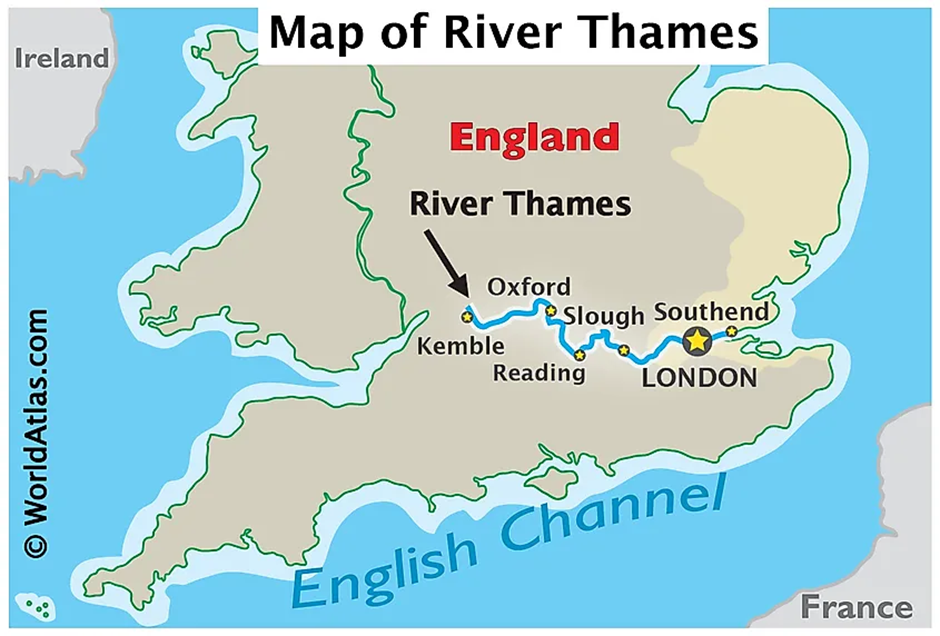
-
- Location:
- Location:
- The Thames River originates from the Thames Head in Gloucestershire, England, and flows through Oxford, Reading, and London before emptying into the North Sea.
- Spanning 346 km, it is the longest river in England and the second longest in the United Kingdom after the Severn River.
- The river is a major waterway that supports trade, transportation, and the water supply for millions of people.
- Current Environmental Issues:
- Current Environmental Issues:
- The Thames faces severe pollution from agricultural runoff, sewage discharge, and industrial waste.
- Agricultural runoff from the Thames Valley and Oxfordshire introduces fertilisers and pesticides, causing harmful algal blooms.
- Industries along the Thames, including oil refineries in Coryton, chemical plants in Barking, and metal industries in Tilbury, contribute to toxic pollution.
- Microplastic contamination from urban waste disposal and stormwater runoff worsens water quality.
- Climate change-induced flooding threatens coastal regions like Essex and Kent, leading to erosion and habitat loss.
- Over-extraction of water for London’s growing population further strains the river’s ecosystem.
- Conservation efforts, including Thames Water clean-up projects and stricter environmental regulations, aim to improve the river’s health.
Carambolim Lake
Why in news?
- Carambolim Lake in Goa, once a key avian hotspot, now hosts increasing mugger crocodile populations due to habitat changes and environmental shifts.
About Carambolim Lake:
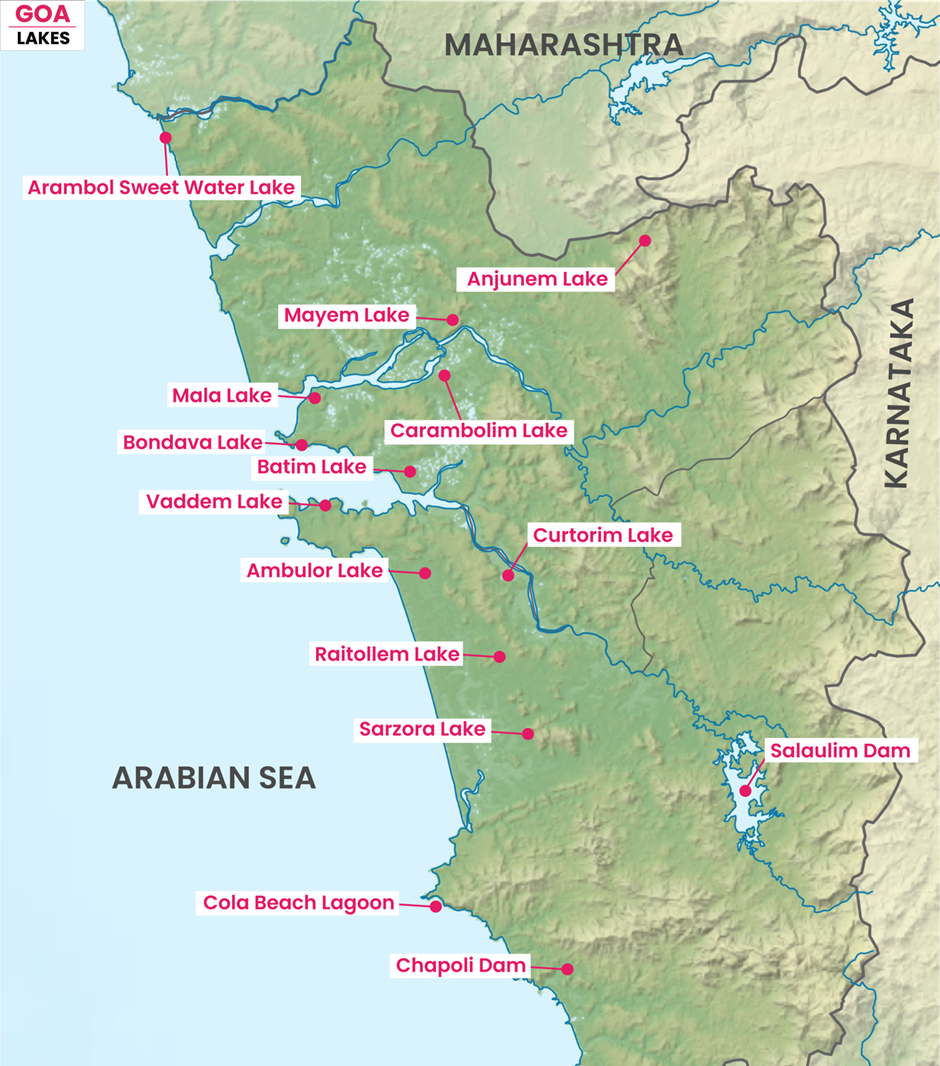
-
- Location:
- Location:
- Carambolim Lake is a man-made freshwater lake in Tiswadi Taluka, North Goa, near the village of Carmali.
- Originally constructed to irrigate paddy fields, it has become an important ecological site.
- Ecological Significance:
- Ecological Significance:
- Carambolim Lake is a designated bird sanctuary that supports both resident and migratory birds. Lesser Whistling Teal, Purple Moorhen, Open-billed Storks, and Marsh Harriers frequent the area.
- The surrounding marshes and aquatic vegetation, including water lilies and hyacinths, create a rich habitat.
- Conservation efforts have been undertaken to protect birdlife, including removing invasive Salvinia weeds and habitat restoration.
- Increase in Mugger Crocodiles:
- Increase in Mugger Crocodiles:
- Recent studies indicate a rising population of mugger crocodiles in the lake.
- This increase is attributed to changing water conditions, reduced human disturbances, and abundant prey availability.
- Additionally, declining bird populations and habitat alterations have created a favourable environment for these reptiles.
- Conservationists emphasize the need for ecological balance to prevent disruption to the lake’s biodiversity.
|
UPSC CSE PYQs
Q1. Consider the following pairs:
Which of the pairs given above is/are correctly matched? (2010)
Answer: Option B Q2. Two important rivers- one with its source in Jharkhand (and known by a different name in Odisha) and another, with its source in Odisha merge at a place only a short distance from the coast of bay of Bengal before flowing into the sea. This is an important site of wildlife and biodiversity and a protected area. Which one of the following could be this? (2011)
Answer: Option A
Q3. Consider the following pairs:
Which of the pairs given above is/are correctly matched? (2020)
Answer: Option C |



